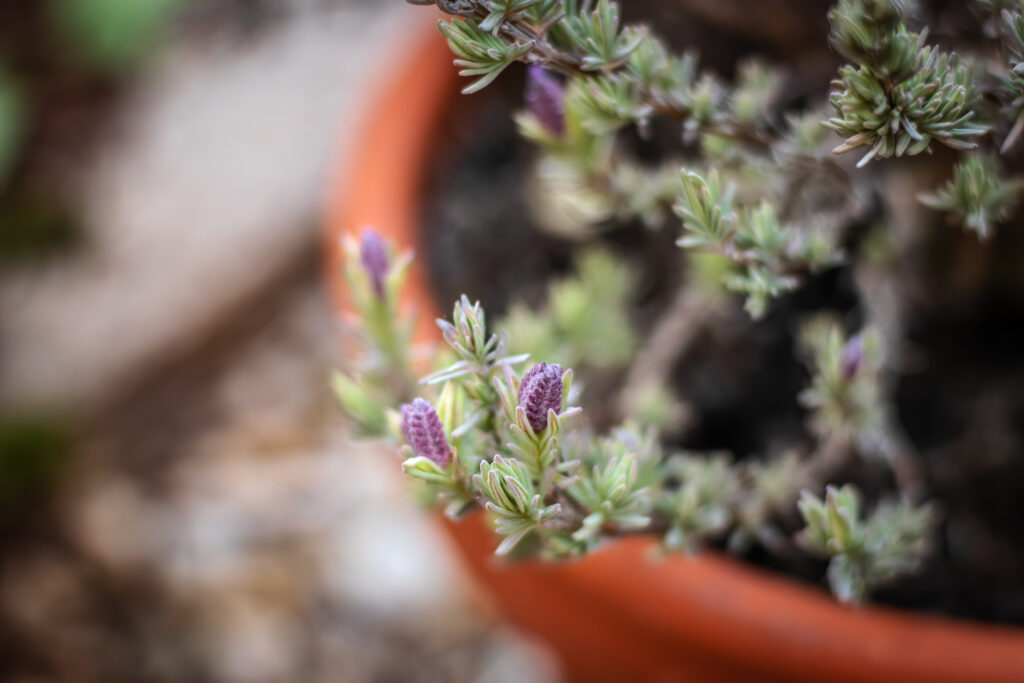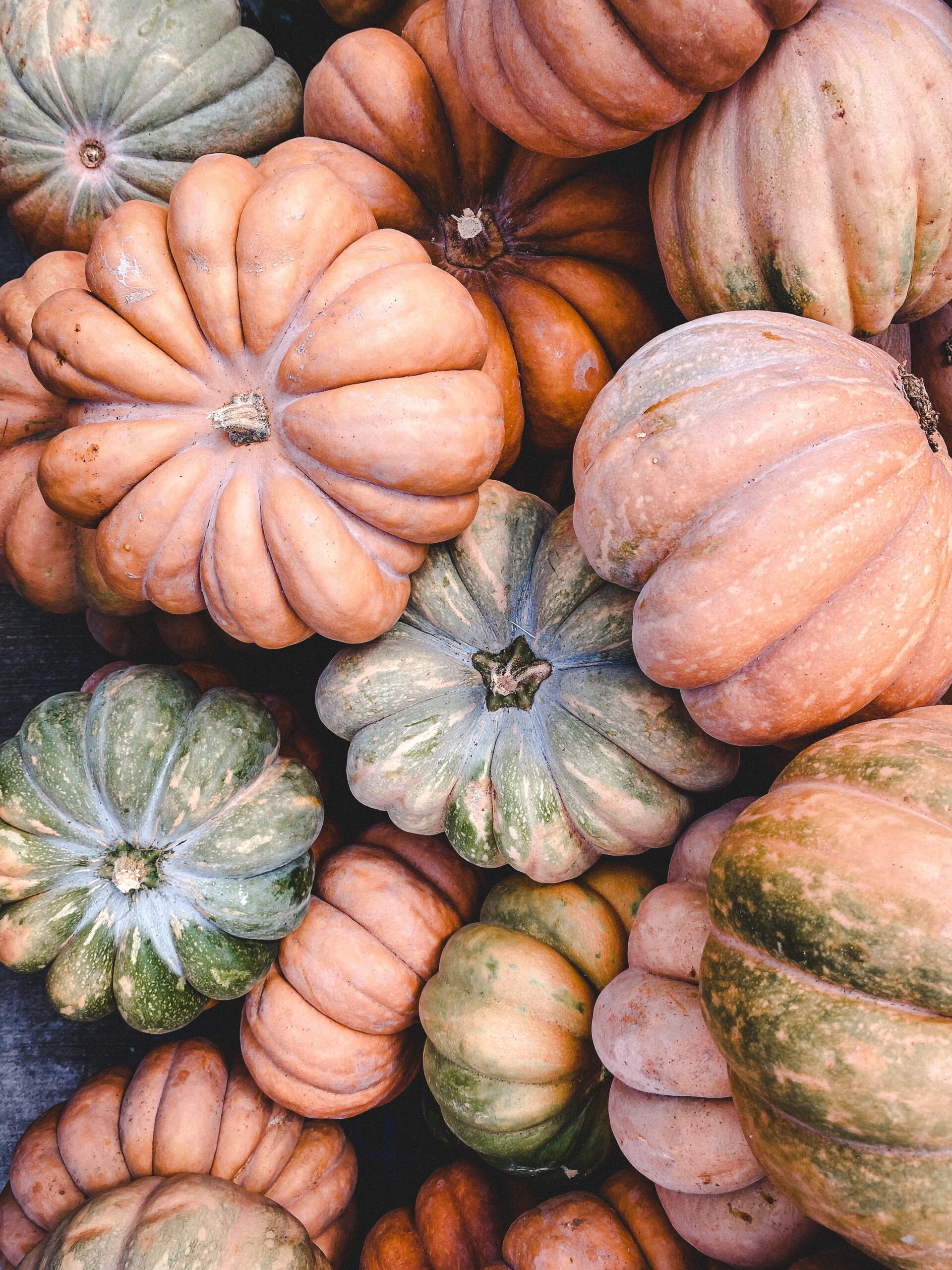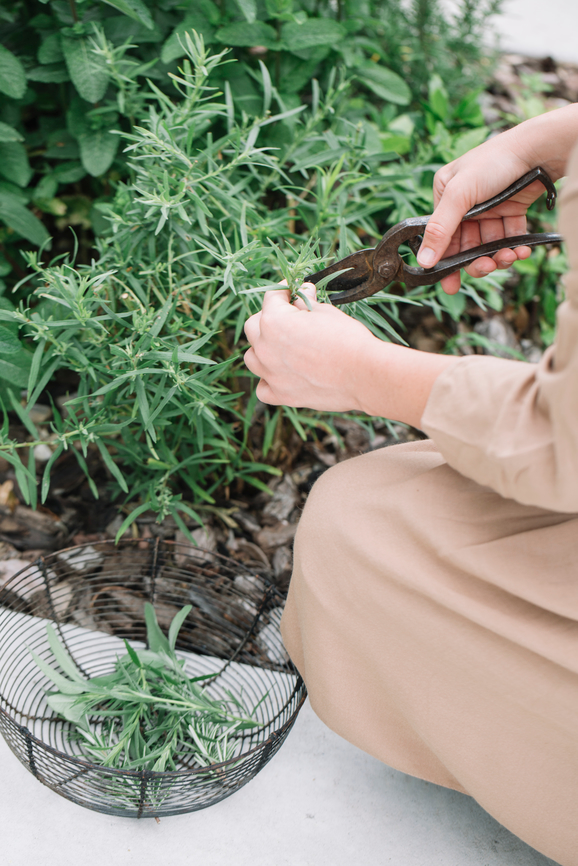Lavender is hard not to love. With other popular plants like roses, you either love them or hate them, but lavender is different. Quietly, it’s worked its way into our hearts. Who doesn’t at least have a basic appreciation? Not only is it proven to have anxiety-reducing benefits but the strong, recognizable scent calms and soothes the soul and we always love a color palette that is soft yet inviting. It comes as no surprise, therefore, that many people look to grow lavender in their spaces, whether indoor, outdoor or both. They just may not know where to begin. Surprisingly, it’s a great plant for beginners and very easy to grow. You don’t want to just grow it however, you also want it to thrive. That’s why we are covering everything you need to know to have beautiful blooms, a strong fragrance and a happy plant.

The Basics
Did you know that there are about 47 species of lavender? With over 450 varieties? You’re likely familiar with the Mediterranean members of the family: English (Lavandula angustifolia), French (Lavandula dentata), Spanish (Lavandula stoechas) and Portuguese (Lavandula latifolia) lavenders. These tend to be the most popular to cultivate and for very good reason, they have a strong fragrances, aren’t particularly fussy and in the right conditions can live for many, many years. But when we are talking about growing lavender in pots, we set our sights on English Lavender. Capable of tolerating colder temperatures, meaning in some areas they can survive winters outdoors (zones 5-10, check your zone here), and thriving in well-draining soils that should dry out between waterings. Many varieties can bloom for several months at a time, and tend to stay compact, meaning repotting isn’t a constant worry.
Creating Perfect Conditions
Varieties |
While our top pick is English lavender for container gardening, you’ll find there are plenty of varieties available. We love varieties like the ‘‘Sweet Romance’, ‘Hidcote’, ‘Munstead’ and ‘SuperBlue’. |
Container |
Select a container that is at least 12-16 inches wide with good drainage. Look to materials like terracotta, clay or ceramics as these materials are porous and do not conduct excessive amounts of heat. Although they are heat lover, you don’t want your soils to dry out too quickly (it means more of a headache with watering). |
Soil |
To thrive, lavender needs well-draining, aerated soil that is slightly alkaline with a low to moderate amount of organic matter. We’d advise creating your own mix (traditional soils will retain too much water) composed of: 2 parts horticultural sand, 2 parts peat moss, 1 part perlite, 1 part small stones/pebbles and 1 part organic matter like compost for the best results. |
Light Conditions |
Full sun! At least 6-8 hours a day of direct light. |
Water |
Less is more, really. Water your lavender once every few weeks. Overwatering can lead to yellowing and deterioration of leaves and is one of the main contributing factors to unsuccessful growing seasons. |
Fertilizer |
None needed. Lavender actually prefers poor soils. |
Maintenance |
Primarily we look to pruning. Depending on your variety, following a flowering (some flower for several months at a time while others a few times a year), plants should have 1/3 of the plant pruned. This helps keep a compact shape and keeps your plant healthy. |

More Reasons to Grow Lavender
If you’re not already convinced that lavender needs to be an immediate addition to the garden, keep reading. While we love the scent of this purple bloom, mosquitos and other bugs detest it. With a particularly bad year for the bugs, it’s all the more reason. And while it’s busy keeping away pests we hate, it attracts pollinators we love, like bumblebees. And as already mentioned above, it have numerous health benefits. It’s been scientifically proven to reduce stress and anxiety and to soothe and calm when inhaled. What more could we ask of this dainty beauty?
Forever On Trend?
Last year Pantone selected Very Peri as the colour of the year, with a note that it would likely extend into 2023. And it has. It may be in part due to Taylor Swift’s beloved song “Lavender Haze” or the emergence of ‘Digital Lavender’ a tone that represents wellness. But the therapeutic lavender has made a name for itself and is likely here to stay a while.
We wish you the best of luck as your grow your lavender this year! If you’re looking for inspirational reading material, check out The Wild Blog, for more on all things garden and lifestyle. Lastly, we’d love to connect, be sure to follow us on Instagram and Pinterest!



